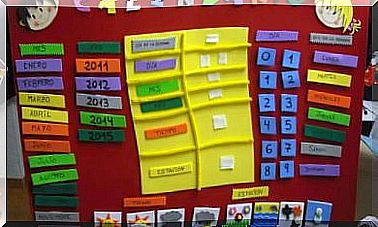How To Build Resilience In Children?

Fostering resilience in children is providing them with emotional tools to help them cope with adversity and setbacks that they will have to live. It is preparing them to use the problems that are presented to them as effective learning that will help them to strengthen themselves.
When we educate our children to remain balanced, regal in the face of pressures, we are training them as successful human beings who will know how to control both their impulses and the events that lie ahead.
Resilience must be accepted as an aptitude, an innate method of those trained not to be intimidated by problems, who do not consider defeats and, therefore, do everything to get ahead and overcome themselves.
For your child to become one of them, we decided to write this article.
Why teach children to be strong in the face of adversity?
No one is exempt from being exposed to traumatic situations because pain and suffering are also part of life.
From a very young age, children face problems that enable them to learn. In fact, they learn best when they run into barriers that make them overcome and seek new alternatives to achieve any purpose.

Let’s say a toddler crawling through an unobstructed room does not receive the same stimuli as a toddler with pillows and cardboard boxes that cause him to back up, step over, under, or go around them.
In kindergartens, for example, children must face the aggression of their peers, seeing that their desires are not immediately gratified, the separation anxiety due to the distance of their parents, the new teachings that they may find it difficult to assimilate on how to get on well. the spoon, tie your shoes, have muscle control to make a circle … All this can be stressful moments that will require extra effort. Whether or not children succeed and cry depends on their resilience.
The ability to recover, overcome or adapt to unexpected events that transform their daily life, and their ability to develop in the face of challenges, gives the measure of the resilience capacity of each person.
How to build resilience in children?
Children’s resilience determines, both in the short and long term, how happy or unhappy they can be.

To promote resilience in yours, we recommend teaching him:
- To commit to their duties. Feeling respect for each of your goals and knowing yourself the most responsible for their accomplishment. Studying, tidying up their room, picking up their toys, cleaning their shoes, dusting the dust, helping in the garden … We must not delegate to others, and in this case, their parents, the tasks that belong to them as schoolchildren or members of the family.
- The importance of making an effort. Teach him not to settle for a 97 when he can get a 100 if he studies a little more. Your child must be constant and learn that in the arrest that is put in each objective is the victorious end of this
- What the word challenge means. Setting higher and higher goals will help you grow. Whoever challenges himself makes use of his physical and cognitive qualities, but is not satisfied with them, he tries to surpass himself to develop his skills even more. If you have practiced a lot and your soccer team has just won in the municipal competition, you must master new and better plays to also win in the provincial one
- About self-esteem. Self-love, the positive assessment that one has of oneself, is the basis for one to feel confident of their qualities and to gain momentum. If your child has high self-esteem, he knows what it is and it is clear that he will be better prepared to face the adversities that lie ahead!
- To be independent. It is okay for him to take you as his example and seek your support, but you must teach him to act and think for himself. Your child must become an independent person who is not always under your protection and is not afraid of exposing himself. When he is an adult he will need to be, so it is good that it is practiced from now on, don’t you think?
- To combat emotional pain. The child must learn that the pain for the death of a loved one, for rejection, for not having achieved what they wanted so much, or for not passing a test must be faced as all problems are faced. Teach him, for example, that it is sad that grandmother is no longer by his side, but death is as natural as birth and although it hurts, he should not allow it to intimidate him. If she has left, there is always the pleasant memory of all the time she lived with him, how well they spent together and how much he loved her. Teach him more than to mourn death, dedicate himself, while still alive, to appreciate and take advantage of the moments he has with his loved ones.
At You Are Mom, we believe that fostering resilience in children should be part of the education given to them at home. They should not be pampered and trained with the feeling that they are worthy of everything. You have to show them what they are worth and how you get spiritual and economic riches. Know and respect the danger. Facing destiny come as it comes. Make them strong and not fearful of the world around them.









